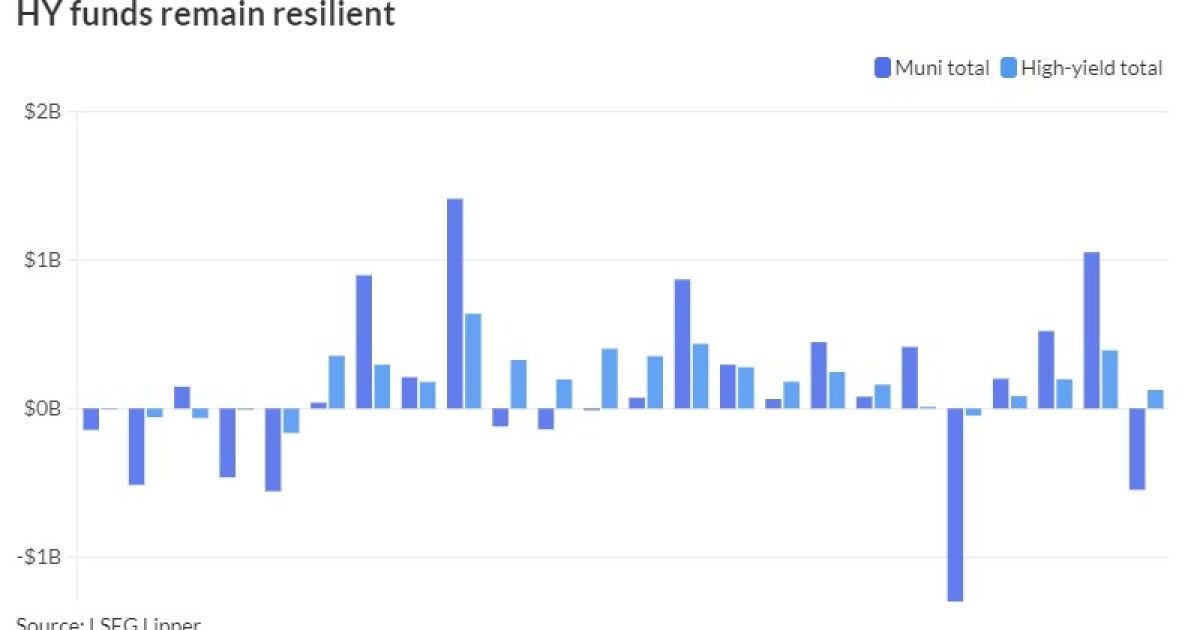California deficit underscores state’s revenue volatility
5 min read

News of the $68 billion budget deficit projected for California in fiscal years 2022-23 and 2023-24 raised alarm bells. But several state budget watchers say longer-term trends are less worrying.
Though S&P Global Ratings
California’s economic growth looks to be cooling in California’s largest metros, but growth within the state remains largely positive, though it’s shifting into a lower gear, Wells Fargo economists Charlie Dougherty and Patrick Barley wrote in a Dec. 14 commentary.
“We recently published a report in July that found that California’s economy has been holding up surprisingly well despite a growing number of cyclical and structural obstacles,” the Wells Fargo economists wrote. “In the months since publication, the same general trends have largely held true.”
The Wells Fargo economists said they have not made substantive changes to their outlook since July. The unemployment rate has trended up recently, signaling a slowdown in economic growth across the state. But “California is not only the largest state economy in the nation, it is home to a diverse array of metro areas where economic conditions often vary greatly,” Dougherty and Barley wrote.
Though the state still faces headwinds, it’s also starting to get some lift from tailwinds including the end to the Hollywood writers and actors strike, Wells Fargo wrote. Plus, an easier monetary policy
Higher debt costs have been problematic for the state’s technology and life sciences industries, the Wells Fargo economists wrote, but optimism around artificial intelligence has been a boon for the state’s tech sector. Wells Fargo expects that a Fed easing next year will be a boon to the state’s real estate, manufacturing and freight sectors, all of which have been impacted by the elevated interest rates.
Department of Finance spokesman H.D. Palmer noted that the stock market has rallied this year, after dropping more than 25% in late 2022, which could be good news for this coming April’s tax collections. The state’s progressive tax structure has a strong reliance on income tax revenues, and in particular on the state’s high-income taxpayers. Roughly 40% of income tax revenues come from the top 1% of taxpayers in the state, according to the Legislative Analyst’s Office.
That dynamic means the state’s fortunes rise and fall with the stock market, as wealthier state residents receive the bulk of their income from capital gains and bonuses tied to their company’s stock price which tends to rise and fall based off the stock market and the strength of the economy, Palmer said.
The controller “called for calm” in the face of the budget deficit after she released the cash report from her office on Dec. 8.
The state had $18.7 billion in cash as of Nov. 30, compared to $33.1 billion in 2022. It also had $91.4 billion in borrowable resources as of Nov. 30, including a combined $25 billion in the special fund for economic uncertainties and the budget stabilization account, plus $73.8 billion in borrowable resources. That is minus around $3 million in internal loans.
The state brought in $74.5 billion in general fund revenues and $27.2 billion in special fund revenues from all sources, including income tax, between July 1 and Nov. 30, according to the controller’s cash report.
The state’s Department of Finance sent letters to department heads at Gov. Gavin Newsom’s behest on Dec. 12 telling them to sharpen their red pencils, and only submit budget requests for the most necessary items.
“We do have the ability to hold off or pull back on previously authorized spending,” Palmer said. “The governor got ahead of that by issuing a directive and budget letter to the department heads.”
“As such, all state entities must take immediate action to reduce expenditures and identify all operational savings achieved,” wrote Finance Director Joe Stephenshaw in the letter.
Palmer pointed to record reserves of $38 billion, of which $22 billion is the money in the budget stabilization account.
“That is an insurance policy,” he said. “We haven’t had an insurance policy of that level in California’s budget history.”
Palmer emphasized that doesn’t minimize the challenges lawmakers will face in crafting this year’s budget.
“Let’s look at where we are ending in 2023,” Palmer said. “The S&P 500 started the year 20% below its all-time high, but it’s now up by 24% year-over-year. And NASDAQ, the tech index was up 41.3% year-over-year as of Monday.”
In addition to the state’s economic woes, the population has declined for the third year running, according to figures
The state’s population dropped 0.1% in the fiscal year ended June 30 for a loss of 37,200 residents since July 1, 2022,
It is a fraction of the 295,000 drop during the first full fiscal year of COVID-19 in 2020-21, according to the DOF report. Above-average deaths have continued to decline from their 2021 peak, while immigration levels have largely recovered since the end of stringent federal rules imposed early in the COVID-19 response, according to the report.
“The decline is declining,” Palmer said.
“An increase in deaths, sharp drops in international immigration, and a rise in residents moving to other states were responsible for the decline,” BMO Chief U.S. Economist Scott Anderson and Senior Economist Jay Hawkins wrote in their December outlook for California. “On a brighter note, the population is forecast to stabilize in fiscal year 2024 then gradually start growing again, helping to support economic activity.”
Palmer cited resumption of legal immigrants moving to the state under HB1 visas, the issuance of which was stalled under the Trump administration. The state benefits economically through the creation of new companies by having the brightest minds from around the world come to work here, he said.
“The demographic situation appears to be on the mend,” the Wells Fargo economists said. “The outflow of residents spurred by the pandemic was less acute in 2022, all while international immigration improved considerably.”
Even with the resumption of HB1, economists have cited the fall off in initial public offerings of new companies seeking market access to further growth as one of the harbingers of the slowdown in the state’s economy.






